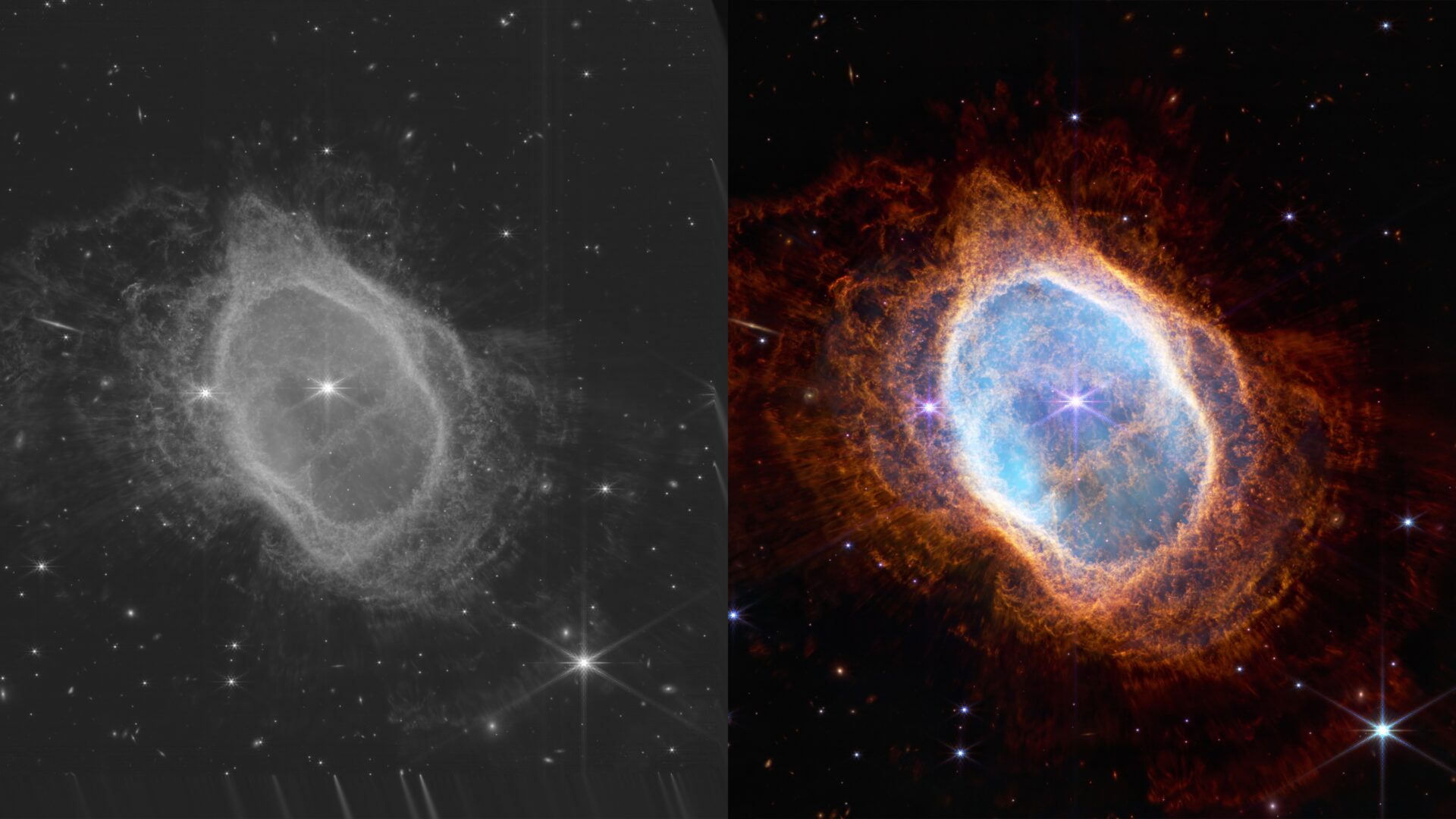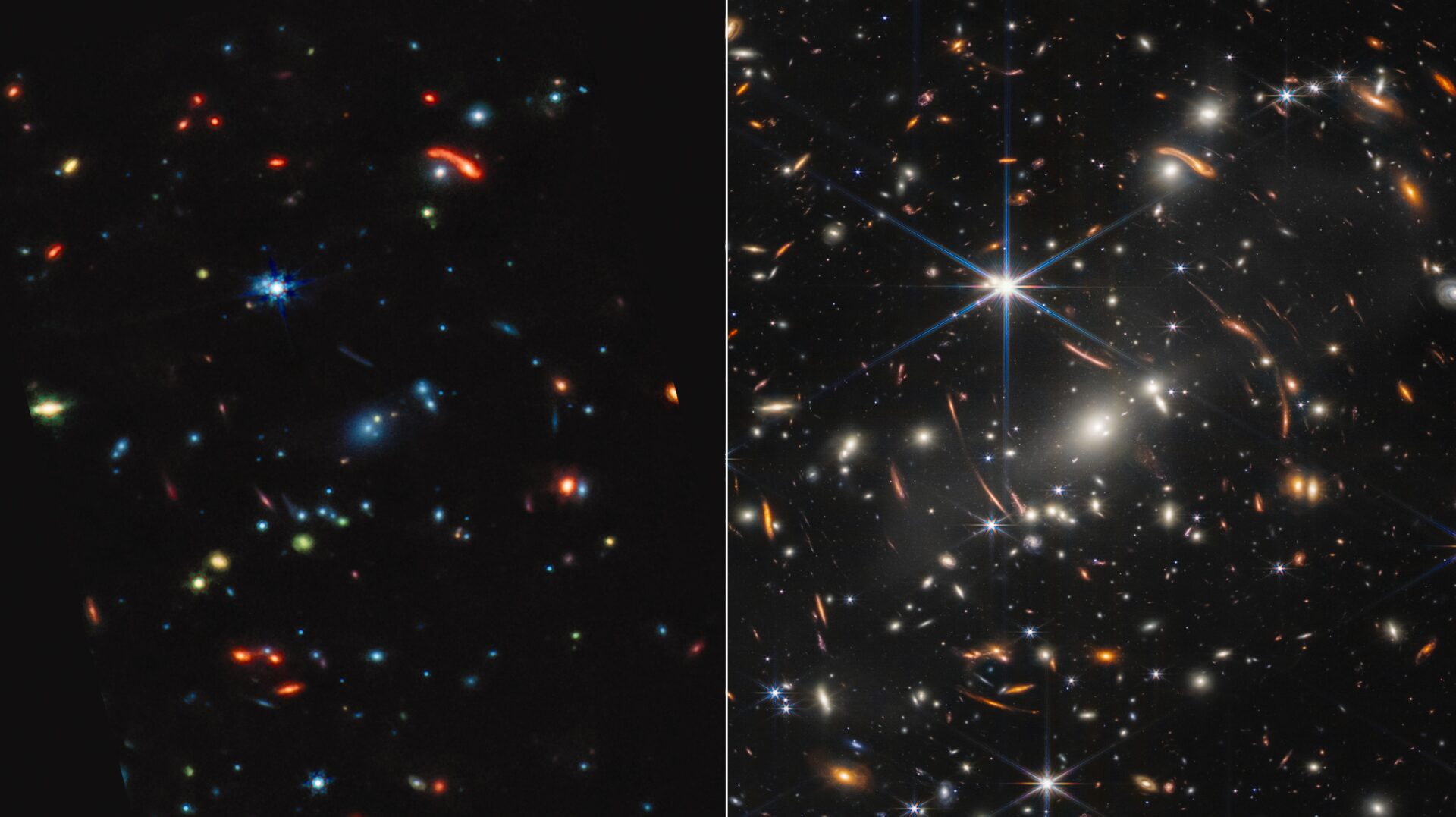On July 12, the first full-color images taken by the James Webb Space Telescope were published. The images amazed the world with detailed images of nebulae and galaxies in unprecedented quality. But the very first test photos were not typical color images, they were more like negatives, nevertheless they helped to align the mirrors when focusing on a distant star. But now that the telescope is running at full power, the images are filled with bright colors. However, JWST collects only infrared and near infrared light, which the human eye is not able to see. Where do the bright colors in the photo come from?

Photo Editing
Image editors from the James Webb team are tasked with converting the telescope’s infrared image data into some of the brightest views of space we’ve ever seen. The task of the editors is to convert various infrared wavelengths into the visible spectrum with red, blue and yellow filters. Of course, the processed images are not literally what the telescope saw, but they are very much the same as the real colors if they were seen by the human eye.
If you look at the James Webb image before processing, it will look like a black rectangle dotted with a few white dots. The telescope’s raw images are so overloaded with data that they need to be scaled down before they can be converted to visible light. The image should also be cleared of artifacts such as cosmic rays and glare of bright stars falling on the telescope detectors.

During processing, longer infrared waves are assigned more red colors, and shorter infrared waves are assigned more blue colors. The process is called chromatic ordering and the spectrum is broken down into as many colors as the team needs to cover the full spectrum of the light depicted in the images. It also depends on which elements are depicted in the photo. When working with narrow–band wavelengths in optical light – oxygen, ionized hydrogen and sulfur – both of the last emit red. So, hydrogen can be placed in green visible light to provide the viewer with more information.
Hidden secrets of the Universe in infrared light
Astronomy is often practiced outside the visible spectrum, because many interesting objects in space shine brightly in ultraviolet, X-rays and even radio waves. James Webb is designed for observation in infrared light, the wavelength of which is longer than red visible light, but shorter than microwaves. Infrared light can penetrate thick clouds of gas and dust in space, allowing researchers to see previously hidden secrets of the universe. What is particularly intriguing to scientists is that light from the early universe is being stretched as the universe expands, meaning what was once ultraviolet or visible light is now becoming infrared-an effect known as “redshift”. Thanks to this effect, scientists measure the distance to the most distant objects in the universe.
Earlier we reported on how Chile hastened the construction of the most powerful telescope, which would be even better than James Webb.
Follow us on Twitter to get the most interesting space news in time
https://twitter.com/ust_magazine
